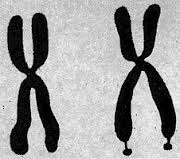Highlights
- •An unbiased genetic screen identifies effectors of AKT signaling as regulators of NMD
- •AKT phosphorylation of UPF1 overcomes autoinhibition of UPF1 helicase activity
- •AKT signaling promotes formation of EJCs containing AKT at the expense of UPF2
- •AKT and UPF2 constitute alternative EJCs with distinct mechanisms of UPF1 activation
Summary
Despite a long appreciation for the role of nonsense-mediated mRNA decay (NMD) in destroying faulty, disease-causing mRNAs and maintaining normal, physiologic mRNA abundance, additional effectors that regulate NMD activity in mammalian cells continue to be identified. Here, we describe a haploid-cell genetic screen for NMD effectors that has unexpectedly identified 13 proteins constituting the AKT signaling pathway. We show that AKT supersedes UPF2 in exon-junction complexes (EJCs) that are devoid of RNPS1 but contain CASC3, defining an unanticipated insulin-stimulated EJC. Without altering UPF1 RNA binding or ATPase activity, AKT-mediated phosphorylation of the UPF1 CH domain at T151 augments UPF1 helicase activity, which is critical for NMD and also decreases the dependence of helicase activity on ATP. We demonstrate that upregulation of AKT signaling contributes to the hyperactivation of NMD that typifies Fragile X syndrome, as exemplified using FMR1-KO neural stem cells derived from induced pluripotent stem cells.







